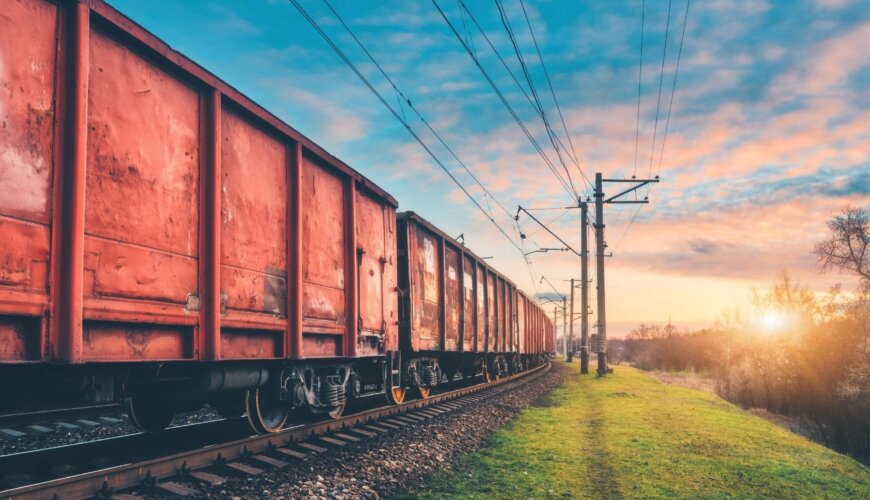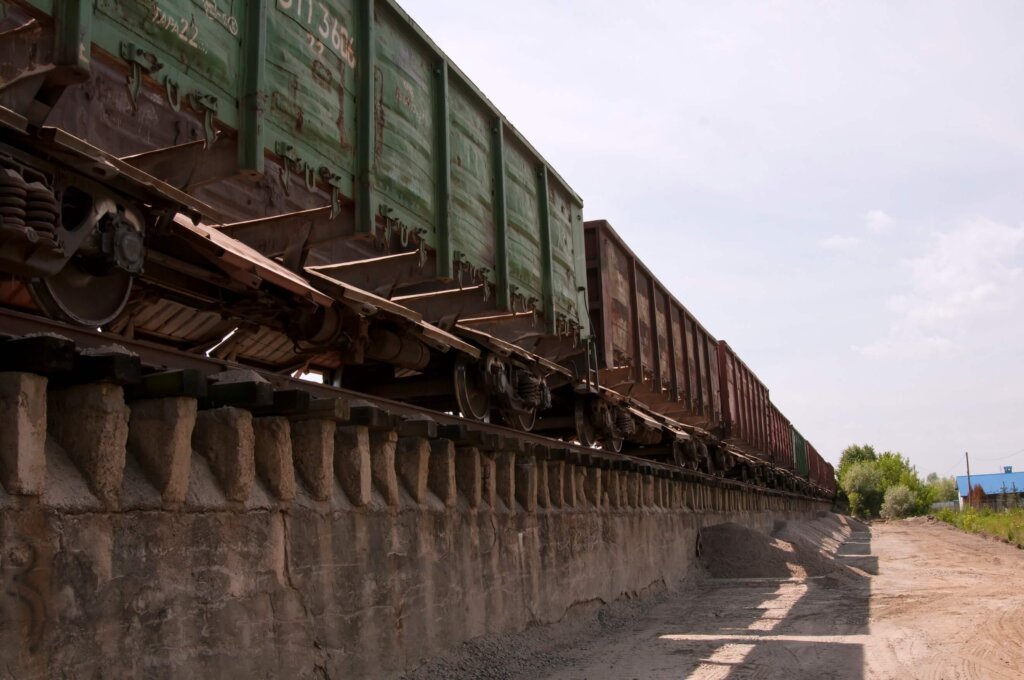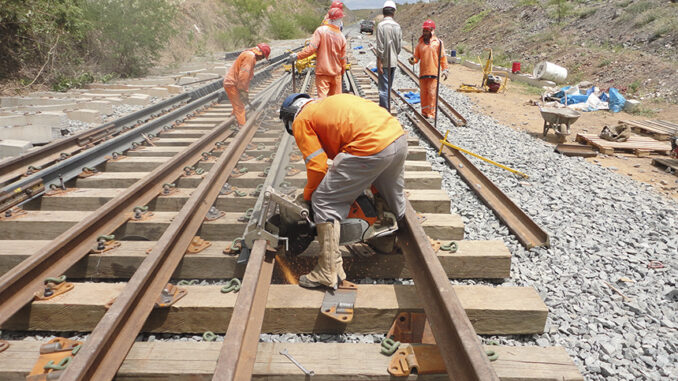
Discover the extent of the Brazilian rail network
The flow of goods from Brazil can be done in different ways, but the main modes of transport that carry out this work are road and rail. Despite the predominance of highways, the extension of the Brazilian railroad network plays a fundamental role in this process.
However, it is important to emphasize that this was not always the case. As we will see below, the history of railroads, to reach the present moment, is full of ups and downs. At times, the Brazilian rail network was even predominant in the national cargo transport scenario.
Content Index
Railroad network in Empire Brazil

The history of the extension of the Brazilian railroad network begins in Empire Brazil, around 1850. A little earlier, the first railroads had been built in the main countries in the world, such as England and the United States, and began to be implemented in Brazil as well.
When railroads began to appear, there was no other mode of transport as impressive. Automotive vehicles, such as cars and trucks, did not yet exist, and the main means of transport at the time was animal traction.
With this, the railroads quickly dominated the means of transporting cargo in the country and were spreading throughout the national territory, essentially in the most important states for production, such as São Paulo, Rio de Janeiro and Minas Gerais. São Paulo, Rio de Janeiro e Minas Gerais.
Although more than 150 years have passed since the beginning of the railroads, much of the extension of the Brazilian railroad network that was built at the time continues to play an important role for the national railroad sector. Of the 29,000 km of Brazilian railroad lines currently, 10,000 were built during the Brazilian Empire period.
Naturally, this shows a great challenge in terms of development and investment in this tensiometer modal. Much of this is due precisely to the growth of the road sector, which, essentially in the mid-twentieth century, around the 60s, came to dominate cargo transport in the country.
As a result, investments in the development of the railroad sector were weakened, many lines were abandoned or scrapped and few new ones were built. The scenario began to change only at the end of the last century, when there were changes in the legislation on the administration of railroads, giving greater scope for private sector investment in the sector.
Brazilian railroad network in numbers

The numbers of the quantity, density and weight of the extension of the Brazilian railroad network still leave something to be desired. Currently, Brazil has a little more than 29,000 km of railroad line throughout the country and the distribution is very precarious.
The main concentration of the extension of the Brazilian railroad network is located in the Southeast Region with 47% of the national railroad network. In comparison, the North and Center-West regions of the country, which are important regions for production, occupy only 8% of the national railroad line. The rest is divided between the South and Northeast regions.
The largest railroad line in the country is managed by the company Rumo Logística. The Rumo line, which runs through the South, Southeast and North regions, is over 12,000 km long.
The concentration of lines in the South, Southeast and Northeast regions occurs mainly because they are the main producing centers in the country and have easier access to the coast. Both in Agribusiness and Industry, states such as São Paulo, Minas Gerais, Bahia and Paraná stand out in the production of important inputs for the national economy, such as ores, grains, cattle, coffee, cotton, among others.
The density of the Brazilian rail network is also a concern. The country has only 3.1 meters of railroad line per km², a very small number, especially when compared to other countries, such as Argentina, which has a density of 15m/km².
If we compare the United States, which has a land area as large as Brazil, but is the country with the largest railroad network in the world, this number is even more impressive. The North American country has a railroad network density of 150m/km².
Challenges

The lack of more incisive investment in the railroad sector is one of the country's great logistical challenges . As we have seen, the road sector is predominant, having a much longer line than the extension of the Brazilian railroad network.
As a result, there is a dependence on the road sector that generates harmful effects for logistics and also for the country's own national production in industries and agribusiness.
The growth in investment in railroads, which has really increased in recent years, but still far from what is desirable, could bring a series of benefits for the country's cargo transportation and for the economy in general.
First, if the extension of the Brazilian railroad network were to grow, the highways would be relieved, and the producing companies would not be totally dependent on this sector, which in many regions have very problematic highways, with a very precarious structure.
In addition, there would be an important economic impact for these companies, as transporting goods by railroads is cheaper than by road, for different reasons.
O freight, for example, is one of the most impacting factors, since road freight is usually much higher than rail freight. In addition, fuel, administrative and toll costs are also cheaper in the rail sector.
Another impacting factor in this relief and what would benefit the companies involved in the transport processes is the speed of the journeys.
A train has the capacity to transport a large number of trucks, making a shipment of products to be transported in just one trip, speeding up processes.
This ability to transport goods in just one trip, unlike highways, also impacts the environment.
As the need for moving vehicles considerably decreases, the CO2 emission of a consignment transported along the length of the Brazilian rail network is considerably lower than those used by the highway.
These are some advantages and solutions that investment in the railroad sector could bring to the country. This has been proven to be a success in large nations around the world, which invest considerable amounts of money allocated to infrastructure in railroads, such as the United States and China, which are references in these matters.
Future of the Brazilian rail network

Despite still falling short of the essentials, there is a perspective of improvement on the part of the government and the companies involved in the concessions of the railroad lines for the coming years.
Since the change in the legislation on concessions, back in the 1990s, investments have started to grow again, and new projects have begun to take shape in recent years. While some have already been completed, others are in the process of structuring and there are also some future projects in progress.
The federal government even has a plan to try to double the length of the Brazilian railroad network within 6 years. For this, it is essential that the works in progress are built , that the projects already presented are approved and that new networks can be developed in this short period of time.
At the moment, the main works that are in progress, and will increase the extension of the Brazilian railroad network, are the railroads of the West-East Integration railroad (FIOL), FerrogrãoFerroeste and the expansion of the North-South railroad.
Conclusion
As we have seen, the railroad sector is still far short of what is needed. Despite the growth in investment in railroads, highways still stand out when it comes to cargo transportation. To expand and overcome logistical challenges, and improve production growth, it is necessary to invest extensively in this modal, relieving the road sector and increasing competitiveness.
Searchs:
https://www.ipea.gov.br/presenca/index.php?option=com_content&view=article&id=28&Itemid=18
http://www1.dnit.gov.br/ferrovias/historico.asp
https://brasilescola.uol.com.br/brasil/transporte-ferroviario-brasileiro.htm












